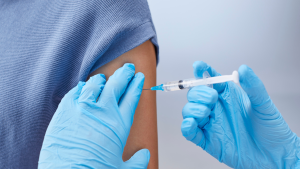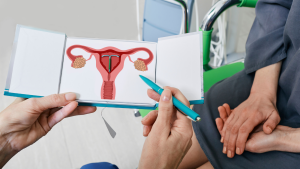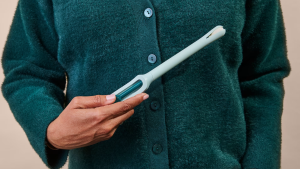
FDA Approves New Version of PrEP—Just Two Shots A Year
The FDA has approved lenacapavir as a form of pre-exposure prophylaxis (PrEP), offering a new option for HIV prevention requiring only two shots per year.

For the first time, the Food and Drug Administration (FDA) has given market authorization to an at-home test for chlamydia and gonorrhea—the Simple 2 test from LetsGetChecked. While there are FDA-approved home tests for HIV (including one that gives rapid results), this is the first FDA-authorized STI test with at-home sample collection.
Home tests are an important tool in fighting the rising rates of STIs. They are easy to use and for some, it can more convenient than going to a health care provider or an STI clinic. Some experts hope that FDA authorization will boost people’s confidence in home-collected STI tests and increase their use.
Produced by LetsGetChecked, the Simple 2 test can be used by people with penises or vaginas to check for genital chlamydia or gonorrhea infection. The test can be bought online without a prescription for $99. For people who want to screen more often, the company offers subscription plans that can lower the price of each test. While not covered by insurance, tests can be paid for using Flexible Spending Accounts (FSA) and Health Savings Accounts (HSA).
Users register with LetsGetChecked and receive a home collection kit by mail. They can then collect a sample of their urine and/or vaginal secretions. Unlike the home COVID tests that most people are familiar with, the results aren’t available at home. Rather, the user sends the collected samples to a lab for analysis and results are usually available within a few days. People who test negative will get their results online. If the test is positive or there is something wrong with the sample, the company will connect the user to a health care provider for follow up, including treatment if necessary.
The Simple 2 test doesn’t check for possible chlamydia and gonorrhea infections of the throat or the anus. People who may have been exposed to these STIs through oral or anal sex should talk to a health care provider.
Chlamydia and gonorrhea are the two most common bacterial STIs in the United States. There were over 1.7 million cases of chlamydia and 700,000 cases of gonorrhea reported to the CDC in 2021. There are likely many more cases each year that go undiagnosed because people who are infected often have no symptoms. Bacterial STIs can be cured with antibiotics but if left untreated they can lead to health issues including pelvic inflammatory disease (PID) and infertility.
Simple 2 isn’t the first STI test on the market to allow for home collection. There are other test kits available online and even on pharmacy shelves. Public health agencies around the country also offer home tests kits, often for free. These tests, however, haven’t gotten FDA authorization.
Before granting this authorization, the FDA validated that the lab processes LetsGetChecked uses to check for chlamydia and gonorrhea worked specifically when using samples collected through the Simple 2 home collection kit. It also looked at data the company provided that showed consumers could safely use the kit, that they understood the results, and that they knew what to do next based on those results.
The question now is whether the FDA will want greater oversight of all home tests. The agency recently put out a draft policy about this for public review. Now that one STI test has gotten authorization, it may be easier for other companies to do the same.
Speaking to NBC News, Dr. Leandro Mena, director of the Division of STD Prevention at the Centers for Disease Control and Prevention, said self-testing provides “a tremendous opportunity to empower people to control when, where and how they get tested, and how they learn about their test result, so they can get appropriate treatment for these STIs.”
And that is key—people should have options to when and where they want. For those who aren’t comfortable collecting their own samples, there are of course still many in-person testing options.

The FDA has approved lenacapavir as a form of pre-exposure prophylaxis (PrEP), offering a new option for HIV prevention requiring only two shots per year.

On a recent episode of Love Island, a cast member sugested that we could blame our current STI epidemic on men who had sex with animals. She pointed to koalas with chlamydia as an example. There’s some truth here, but also a lot of misinformation.

A new report from the Centers for Disease Control (CDC) shows that we’re missing opportunities to prevent congenital syphilis and save lives.

There’s potential good news in gonorrhea prevention as a series of studies suggests that certain meningococcal B (MenB) vaccines can reduce the risk of gonorrhea.

There is new guidance on pain management for IUD insertion and acknowledgement that providers often underestimate the pain patients feel during their procedures.

The FDA just approved the Teal Wand, a self-collection device for HPV testing that does not require a speculum exam or even a trip to the doctor’s office. People can collect their own sample at home and send it to a lab for analysis.
ASHA believes that all people have the right to the information and services that will help them to have optimum sexual health. We envision a time when stigma is no longer associated with sexual health and our nation is united in its belief that sexuality is a normal, healthy, and positive aspect of human life.
ABOUT
GET INVOLVED
ASHA WEBSITES
GET HELP
© 2025 American Sexual Health Association